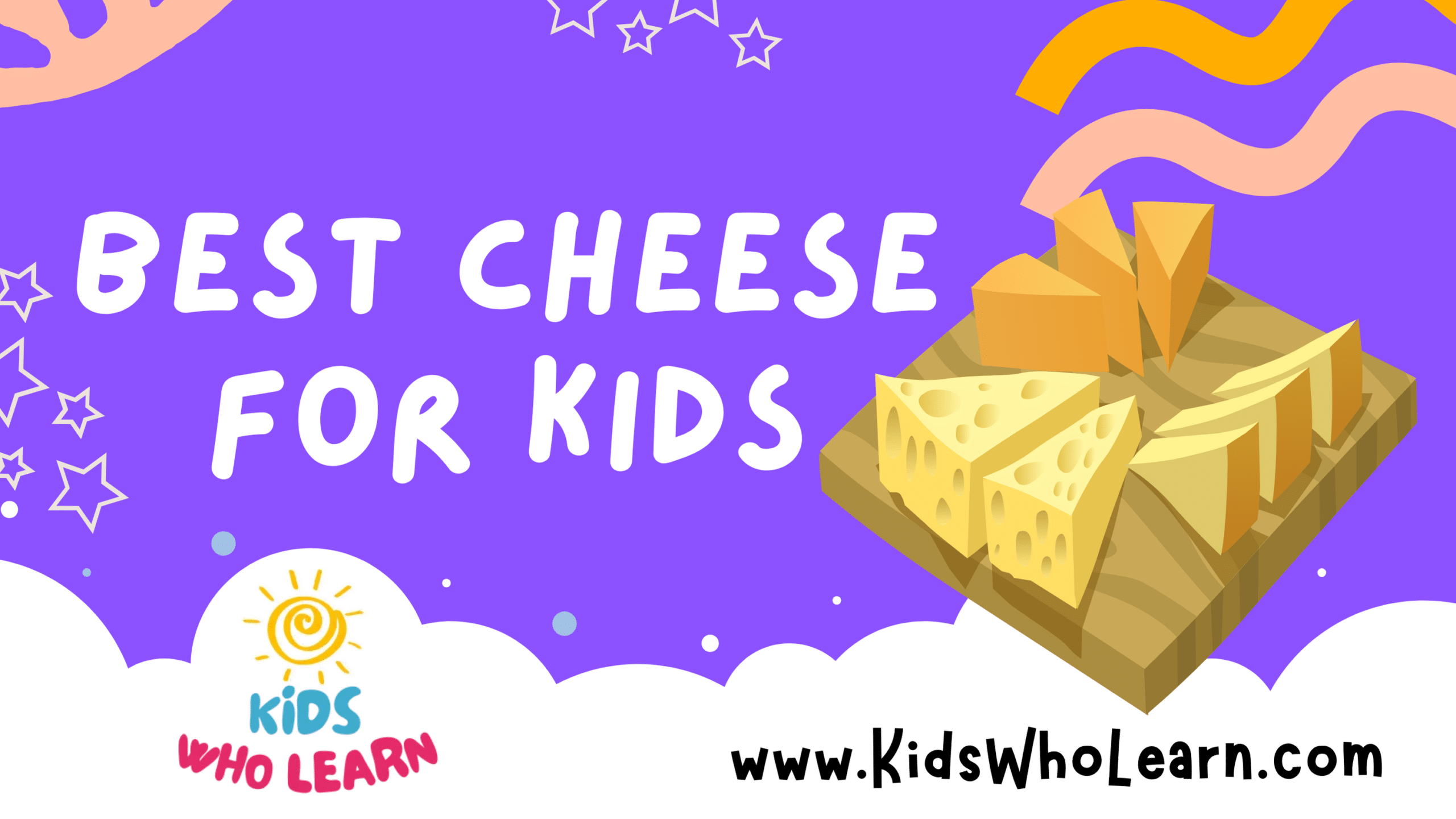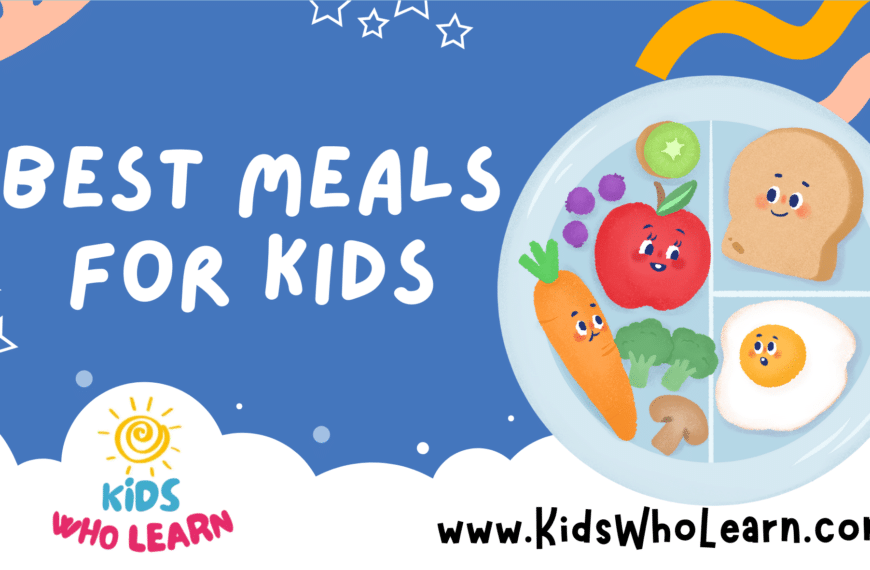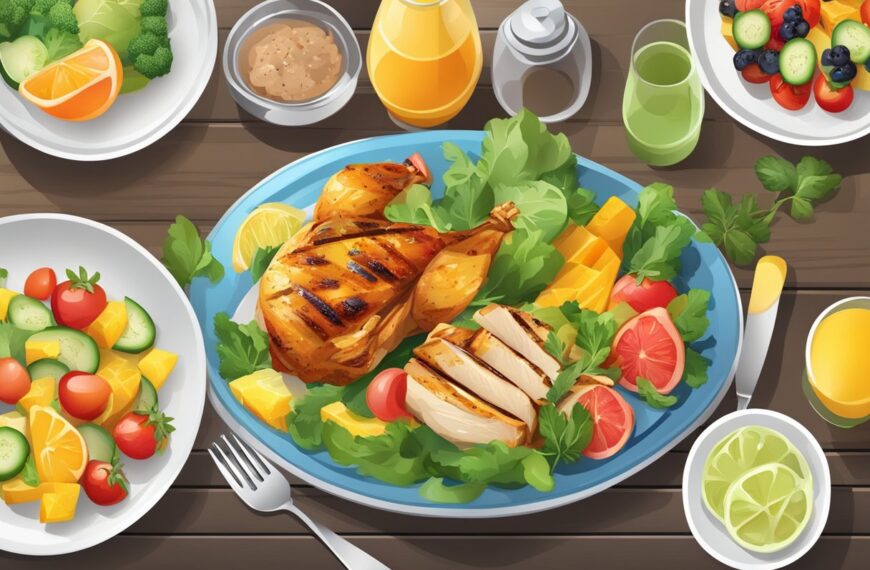Selecting the best cheese for kids is not just about picking a tasty snack; it’s about balancing flavor, nutrition, and appeal to young palates. Cheese can be a fantastic source of calcium, protein, and other essential nutrients that children need for growth and development. When choosing cheese for kids, consider the texture, taste, and how it fits into an overall healthy diet. It’s important to offer varieties that are high in nutritional value while still being kid-friendly.
Understanding the different types of cheese and their nutritional profiles is crucial when selecting the best options for children. Soft cheeses like mozzarella and cream cheese tend to be milder and are often more accepted by children. Harder cheeses, such as cheddar and Swiss, have a more robust flavor and can be introduced as kids’ taste buds mature. The key is to introduce a range of cheeses in moderation and find creative ways to pair them with other wholesome foods to make meals more enjoyable.
Healthy pairings with fruits, vegetables, and whole grains can transform cheese into a balanced component of a child’s diet. Cooking and baking with cheese also present new opportunities to engage kids with foods that are nutritious and full of flavor. Taking into account factors like fat content and potential allergens is essential to ensure that children enjoy cheese as part of a diet that supports their well-being.
Key Takeaways
- Offer a variety of cheeses to provide a balance of flavor and nutrition suitable for children.
- Introduce cheeses with different textures and pair them with healthy foods for balanced meals.
- Consider dietary needs and avoid potential allergens when including cheese in a child’s diet.
Understanding Cheese Fundamentals
It’s important for us to grasp the key elements of cheese, from its basic composition to its nutritional benefits, especially when choosing the right variety for children.
The Basics of Cheese
Cheese is derived from milk, which is coagulated to separate the curds from the whey. The curds are processed and aged to produce cheese with varying flavors, textures, and forms. We categorize cheese by its moisture content, firmness, and the type of milk used, such as cow, goat, or sheep.
Nutritional Profile of Cheese
Cheese is a significant source of protein, crucial for growth and development in children. It also supplies calcium, vital for strong bones and teeth. Here’s a quick overview of the nutritional elements commonly found in cheese:
- Protein: Essential for muscle growth and repair.
- Calcium: Supports bone health.
- Vitamins: Cheese contains vitamins such as B12, which supports the nervous system, and A, which is important for vision and immune function.
- Saturated Fat: While cheese does contain saturated fat, it’s important for us to select cheeses with a lower percentage for children to promote heart health.
Identifying Kid-Friendly Cheese
When we’re selecting cheese for children, we aim for options that are mild in flavor, lower in saturated fat, and rich in nutrition.
- Mild Flavors: For a child’s developing palate, we opt for cheeses like Mozzarella or Cheddar.
- Low Saturated Fat: Look for cheeses labeled “reduced-fat” or “low-fat”. The American Academy of Pediatrics recommends that children above the age of two should have diets with no more than 30% of calories from fat.
- High in Nutrition: Cheeses that are high in calcium and protein yet lower in sodium and added sugars are ideal for children.
By considering these factors, we can make better choices about the cheese we offer to kids, balancing enjoyment with health benefits.
Choosing the Right Cheese for Kids
When selecting cheese for children, it’s crucial to balance nutrition with a taste that appeals to their palates. We’re focusing on options that are both health-conscious and child-friendly.
Factors to Consider
We advise considering the nutritional content of cheese, as children require calcium and protein for their growth and development. A lower sodium option is often preferable to support a balanced diet, especially given the high sodium content in many processed foods. For kids with lactose intolerance or allergies, identifying suitable cheese types is essential. We must seek alternatives that provide similar nutritional benefits without causing adverse reactions.
Nutritional Profile:
- Calcium: Crucial for bone growth.
- Protein: Important for overall development.
- Low Sodium: Better for a child’s diet to manage intake.
Health Considerations:
- Allergies and Lactose Intolerance: Opt for cheeses that are naturally lower in lactose or lactose-free.
Popular Cheeses for Children
Different varieties of cheese can suit various tastes and dietary needs:
Mild Cheddar:
- Texture: Smooth and creamy, kid-friendly.
- Taste: Mild and not overpowering.
| Nutrition per Serving | Calcium | Protein |
|---|---|---|
| Mild Cheddar | High | Moderate |
Mozzarella and String Cheese:
- Texture: Soft and fun for kids to eat.
- Taste: Delicate and appealing to young taste buds.
| Nutrition per Serving | Sodium | Protein |
|---|---|---|
| Mozzarella/String | Low | Moderate |
Cottage Cheese:
- Texture: Soft curds that are easy to eat.
- Taste: Mild flavor that easily blends with other foods.
| Nutrition per Serving | Calcium | Protein |
|---|---|---|
| Cottage Cheese | Moderate | High |
Swiss Cheese:
- Texture: Firm with a slight elasticity.
- Taste: Nutty and sweet, less pronounced than sharp varieties.
| Health Consideration | Lactose Content |
|---|---|
| Swiss Cheese | Lower |
As a final note, it’s often advised to avoid sharp cheddar for young kids due to its intense flavor, which may not be as appealing to their developing palates. Instead, mild cheddar is a safer bet for a pleasing taste and nutritional benefit.
Healthy Cheese Pairings and Meals
We can effortlessly combine cheese with a variety of healthy foods to make delicious, nutritious snacks and meals for kids.
Cheese with Fruits and Vegetables
Pairing cheese with fruits and vegetables creates not only a tasty snack but also a powerhouse of nutrients. Here are some of our favorite combinations:
- Apple Slices and Cheddar: A classic pairing, the crisp sweetness of apples complements the sharpness of cheddar.
- Grapes and Gouda: Gouda’s mild, nutty flavor pairs well with both red and green grapes.
- Carrot Sticks and Havarti: Havarti’s creamy consistency goes well with the crunchy texture of fresh carrot sticks.
- Cherry Tomatoes and Mozzarella: A mini take on Caprese, skewer them for a fun and healthy snack.
Incorporating Cheese into Meals
Cheese is extremely versatile and can be included in meals to enhance both the flavor and nutritional value. Here are easy ways to integrate cheese into kids’ lunches and dinners:
- Mac and Cheese with Broccoli: Mix steamed broccoli into whole-grain mac and cheese for a boost of fiber and vitamins.
- Cheese Pizza with Vegetables: Top a whole wheat crust with low-fat mozzarella and an array of colorful vegetables for a balanced meal.
- Turkey and Swiss Sandwich: Layer Swiss cheese with turkey on whole-grain bread for a simple, healthy lunchbox option.
- Cheese Sauce over Green Salad: Drizzle a homemade cheese sauce made with low-fat cheese over a leafy green salad to make it more appealing to kids.
Cheese In Cooking and Baking
When we incorporate cheese into cooking and baking, we’re looking to enhance both flavor and texture. Our focus is on choosing the right cheese to complement the dish, whether it’s melted into a sauce or baked into a crust.
Cheese as an Ingredient
We select cheese for our dishes based on the desired outcome. The flavor profiles we want to achieve can range from mild to sharp, and the texture can be soft or hard. For a creamy consistency in cooking, cheeses such as cheddar or gouda can be ideal. When baking, a mix of grated parmesan and mozzarella can add a delightful layer of flavor and texture that bakes well.
- Cooking: Incorporate cheeses that melt easily for smooth sauces and toppings.
- Baking: Choose cheeses that can withstand heat without becoming oily, ensuring a pleasant texture in the final product.
Cooking with Cheese
Our cooking often involves familiar favorites like mac and cheese. We start with basic pantry items like flour, butter, and milk to create a roux in a saucepan. Then, we incorporate grated cheese to make a rich, creamy sauce that coats the macaroni perfectly. An onion, caramelized and softened on the grill or stove, can add a savory note to our cheese dishes.
- Ingredients for Mac and Cheese Sauce:
- Flour: For thickening the sauce.
- Milk: The liquid base of the sauce.
- Cheese: Cheddar for its melting quality and strong flavor.
Baking with Cheese
Baking with cheese allows us to transform basic ingredients like cauliflower or dough into comforting and satisfying dishes. When we bake, we’re mindful of how the cheese complements the other ingredients without overpowering them. For a crispy topping, we might choose a hard cheese, grated over a cauliflower bake. This results in a golden and appetizing crust when baked properly.
- Ingredients to Combine with Cheese in Baking:
- Cauliflower: Becomes tender when baked.
- Flour: Can be used alongside cheese for a thicker texture in sauces.
- Macaroni: An essential for the classic mac and cheese bake.
Healthy Considerations for Cheese Consumption
When selecting cheese for children, we must consider its nutritional profile to ensure a balance of taste and health benefits. It is important to monitor calorie and sodium intake and address dietary concerns to maintain a child’s overall well-being.
Calorie and Sodium Content
- Calories: Cheese is energy-dense, with an average serving size of cheddar providing about 113 calories. To avoid excessive calorie intake, we should opt for portion control.
- Sodium: High sodium levels can contribute to increased blood pressure, a risk factor for heart disease. For example, one slice of American cheese contains approximately 406 mg of sodium.
Type of Cheese Approx. Sodium Content per Slice American 406 mg Cheddar 172 mg Mozzarella 175 mg
It’s beneficial for us to choose cheeses with lower sodium content for children to help maintain healthy blood pressure levels.
Cheese and Dietary Concerns
- Allergies: Dairy allergies are common in children; symptoms range from mild to severe. We must ensure that any cheese provided is safe for consumption.
- Lactose Intolerance: Affecting digestion, lactose intolerance requires us to seek out low-lactose or lactose-free cheese alternatives.
- Bone Health: Cheese is a good source of calcium, which is essential for bone development in children, reducing the risk of osteoporosis later in life.
Cheese Type Calcium Content (average per slice) Cheddar 202 mg Swiss 224 mg Mozzarella 207 mg - Artificial Additives: We should be cautious about artificial preservatives and colorings in cheese. Natural cheeses are preferable for a child’s diet.
We need to carefully select cheeses that align with these considerations, always putting the child’s health first.
Creative Ways to Serve Cheese
When we consider introducing cheese to kids, our primary aims are both nutritional value and fun. We focus on kid-friendly cheeses like cheddar, mozzarella, and string cheese, and present them in appealing and exciting ways. Let’s explore creative ideas for serving cheese that are sure to tantalize young taste buds.
Cheese Boards and Platters
Creating a cheese board is a fantastic way to offer a variety of cheeses to kids. We place emphasis on color and texture to make it visually engaging. Here’s a simple guide:
- Mild Cheeses: Start with slices of mild cheddar or Monterey Jack, which are usually favorites among children.
- String Cheese: Include string cheese for a fun, interactive element. Kids love pulling them apart!
- Fruit Pairing: Pair with grapes or apple slices as these complement the cheese and provide a healthy balance.
Here is an example of how to arrange your cheese board:
| Section | Cheese Type | Accompaniments |
|---|---|---|
| Center | Cheddar | Grapes |
| Right | Mozzarella | Apple Slices |
| Left | String Cheese | Crackers |
| Decorative Edge | Monterey Jack | – |
Fun Cheese Snacks
We can take everyday snacks and elevate them with the addition of cheese. This not only makes them more nutritious but also adds a new flavor profile that kids generally enjoy.
- Cheesy Shapes: Use cookie cutters to cut cheddar or Monterey Jack into exciting shapes. Serve these as standalone snacks or as toppers for crackers.
- Mini Pizza Bites: Top small rounds of bread with tomato sauce, mozzarella, and their favorite toppings. Toast until the cheese is bubbly for a quick, homemade pizza snack.
In terms of cheese selection for these snacks, we’ve found that milder cheeses like cheddar and mozzarella are consistently well-received by kids. Remember, the key is simplicity and the fun factor, ensuring the snacks are both enjoyable and straightforward for kids.
Tips and Recommendations
In this section, we’ll guide you through the best practices for storing and handling cheese, serving it in kid-friendly ways, and shopping for high-quality options.
Cheese Storage and Handling
Proper storage is crucial for maintaining the quality and safety of cheese. Use the following tips:
- Storing Cheese: Wrap cheese in parchment or wax paper, then loosely in plastic wrap to allow it to breathe while preventing it from drying out.
- Handling Leftovers: If there are leftovers, rewrap them using the same method and store them in the refrigerator’s coldest part, usually the bottom shelf.
Serving Suggestions
Cheese can be a fun and nutritious snack for kids. Here’s how to serve it:
- Finger Foods: Cut cheese into small, bite-sized pieces or fun shapes using cookie cutters to make it more appealing to children.
- Pairings: Serve cheese with fruits, crackers, or whole-grain bread for a balanced snack.
Cheese Shopping Tips
When shopping for cheese, keep the following in mind to ensure you’re picking the best options:
- Read Labels: Look for cheeses with minimal ingredients and without added fillers or artificial preservatives.
- Explore Options: Don’t be afraid to ask for samples or recommendations at the cheese counter to find flavors that your kids will love.
Remember to share your cheese-serving ideas and tips with other parents on platforms like Pinterest, Facebook, and Instagram to inspire a community of mindful cheese enjoyers.
Engaging Kids with Cheese
We understand the importance of introducing kids to cheese in both a fun and educational manner. We aim to offer practical tips to make cheese an enjoyable and nutritious part of children’s diets.
Educational Aspects of Cheese
Nutrition: We teach our kids about the health benefits of cheese, focusing on its rich calcium content which is essential for strong bones and teeth. A serving size chart can help visualize portion control and its nutritional value.
| Cheese Type | Serving Size | Calcium (mg) |
|---|---|---|
| Cheddar | 1 oz | 204 |
| Mozzarella | 1 oz | 207 |
| Swiss | 1 oz | 224 |
Varieties of Cheese: It’s beneficial to introduce a range of cheese to kids. We can illustrate how cheese varies in texture, taste, and origin, linking them to cultural aspects to expand their global palate.
- Texture: Soft (Brie), Semi-soft (Mozzarella), Hard (Parmesan)
- Taste: Mild (Colby), Tangy (Goat Cheese), Strong (Blue Cheese)
- Origin: Italy (Pecorino), France (Camembert), Netherlands (Gouda)
Interactive Cheese Activities
Cooking Together: We engage kids in the kitchen by incorporating cheese in recipes. Cooking can teach them about combinations and flavors, such as adding cheese to a wrap with veggies or melting it for a dip with hummus and nuts.
Cooking Activity:
- Grilled Cheese Sandwich
- Combine different cheese types.
- Discuss melting points and textures.
- Cheese and Veggie Skewers
- Pair cheese cubes with a mix of veggies.
- Talk about color, taste, and nutrition balance.
Cheese Craft Projects: We can craft together using cheese in fun shapes and as part of edible art, like creating animal shapes with cheese and crackers, which makes for an interactive way to encourage kids to try new types of cheese.
By integrating both education and hands-on activities into our approach to cheese, we can help children develop an appreciation for this nutritious food while learning about healthy eating habits.
Frequently Asked Questions
In this section, we address common inquiries about the best cheese options for children, particularly focusing on health, age-appropriateness, and nutritional content.
What are the healthiest cheese options for children’s growth?
We recommend cheeses that are high in calcium and protein but lower in fat, such as mozzarella, ricotta, and cottage cheese. These provide essential nutrients for bone development and muscle growth.
What types of cheese are suitable for babies starting at 6 months?
When babies start solids at 6 months, we suggest introducing mild cheeses like Colby, cheddar, and Swiss. These are easier for them to digest and offer a good introduction to dairy.
Is Philadelphia cream cheese a good option for babies?
Philadelphia cream cheese can be introduced to babies, but it should be done in small amounts due to its high saturated fat content. Always check with a pediatrician before introducing new foods to your baby’s diet.
What are the best cheese choices for baby finger foods?
For finger foods, we recommend using soft cheeses that melt easily and don’t pose a choking hazard, such as mild cheddar, mozzarella sticks, or string cheese cut into small, manageable pieces.
Which low-sodium cheeses are safe for babies?
We advocate for low-sodium cheese options like natural Swiss cheese or fresh mozzarella. Babies’ kidneys are not fully developed to handle high amounts of sodium, so these cheeses are safer choices.
Are there specific cheeses to avoid giving to babies under 1 year?
We advise against offering babies under 1 year old blue cheeses, feta, brie, and camembert, which may contain harmful bacteria. Also, avoid cheeses high in salt and those made from unpasteurized milk.














